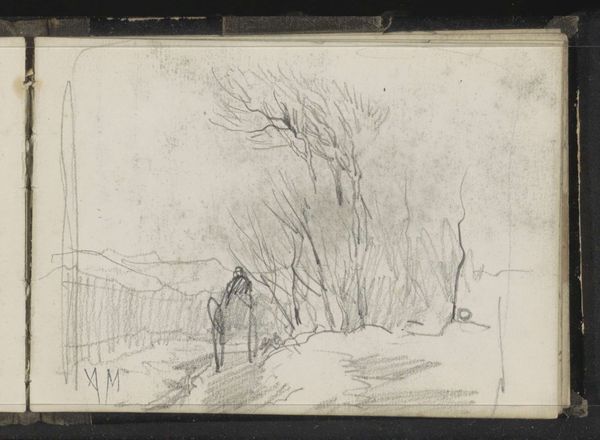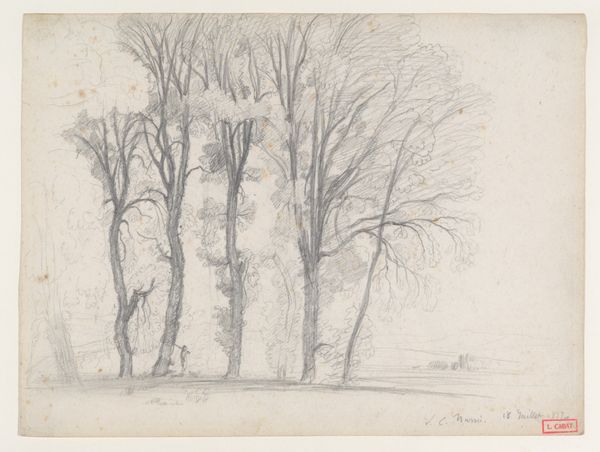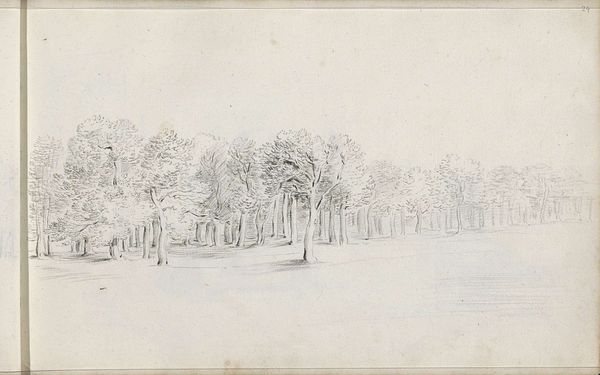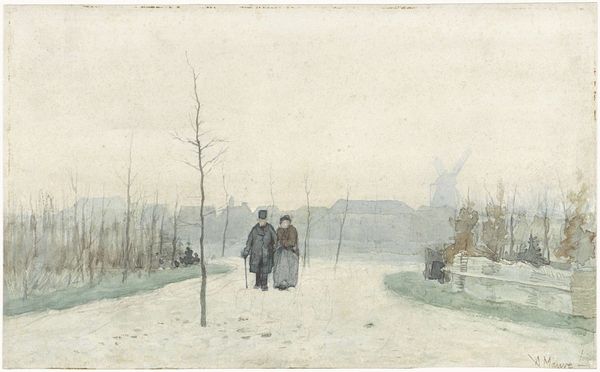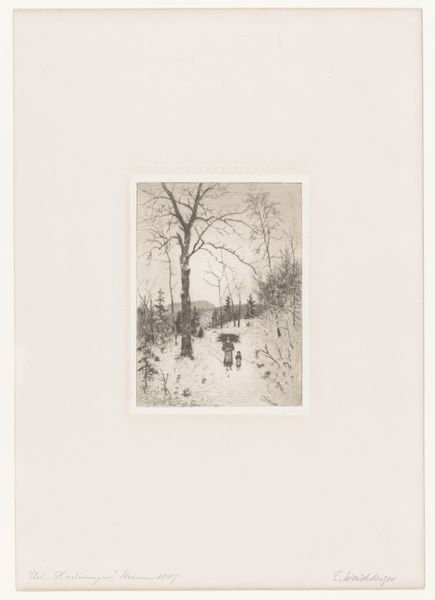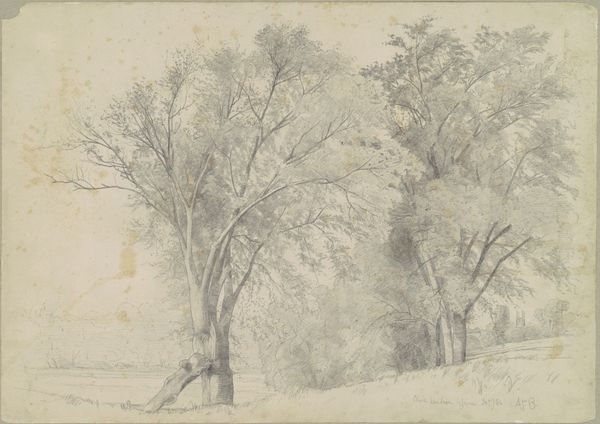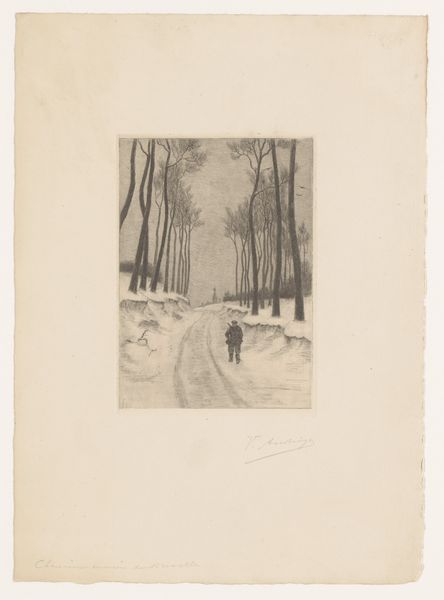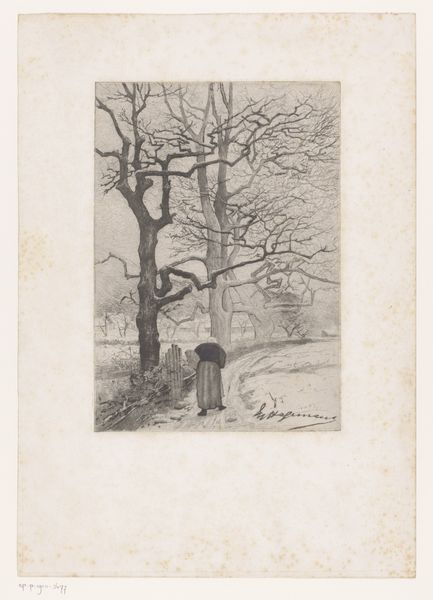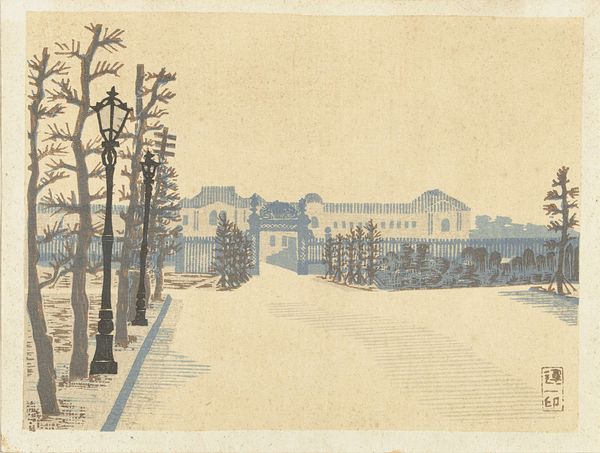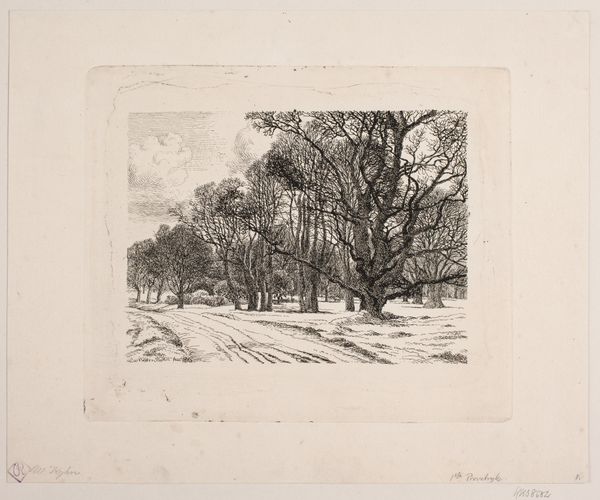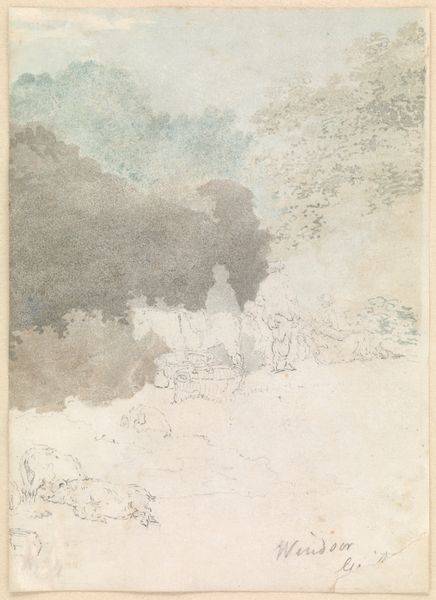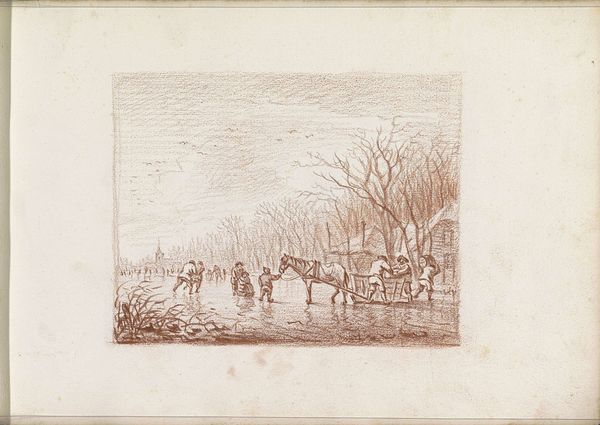
Copyright: CC0 1.0
Editor: Jean François Raffaëlli's "Road of the Revolt at Neuilly" portrays a street scene, bustling with figures. The muted tones create a rather somber atmosphere. What can you tell me about the historical context that might inform this work? Curator: The title suggests a politically charged atmosphere. Neuilly, near Paris, experienced significant social unrest. Raffaëlli often depicted working-class life. How might this piece engage with the politicization of public spaces during the late 19th century? Editor: Perhaps the figures represent the everyday people caught in the crossfire of social upheaval? Curator: Exactly. The depiction of ordinary Parisians invites us to consider the complexities of urban life and the social tensions brewing beneath the surface. It’s a reminder that art often reflects the socio-political realities of its time. Editor: I hadn't considered that the muted tones could emphasize the heaviness of the political climate. Thanks for illuminating that for me. Curator: My pleasure. Considering the political implications definitely adds another layer to understanding the artwork.
Comments
No comments
Be the first to comment and join the conversation on the ultimate creative platform.

